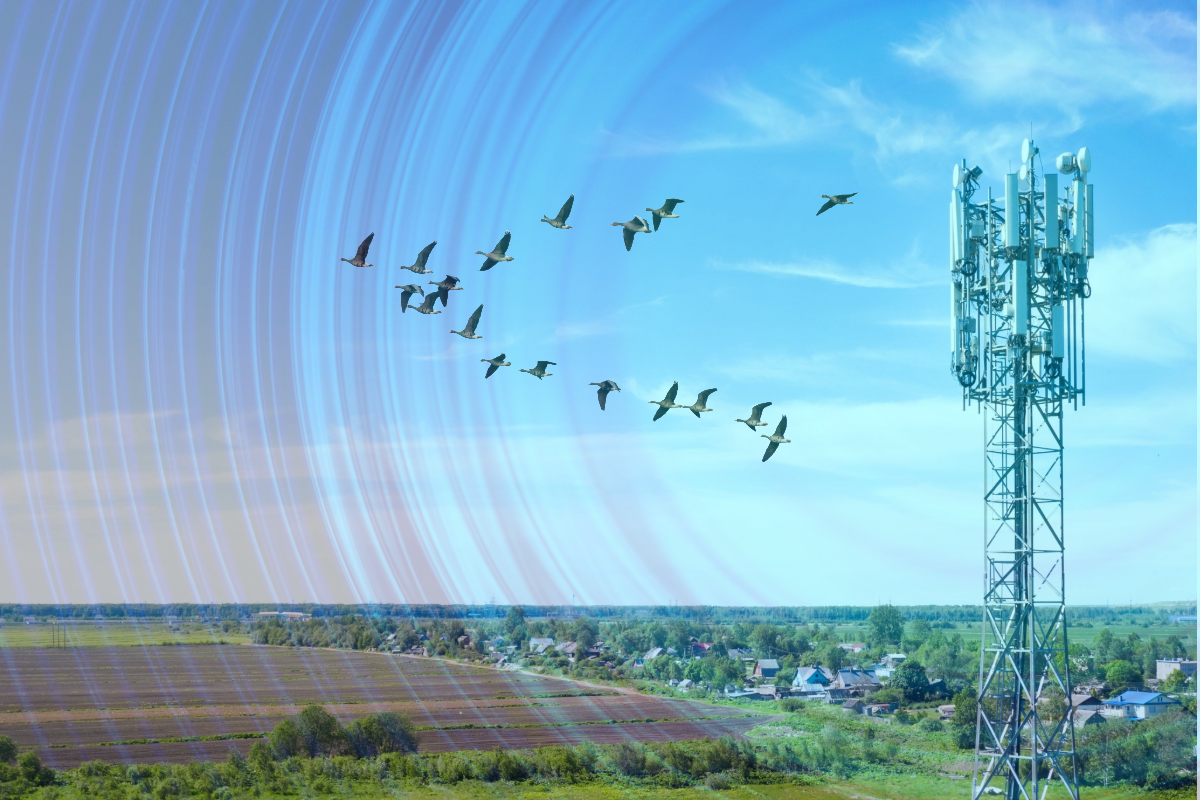
It’s been over two years since a federal court case ruled that the FCC needs to reassess their outdated wireless radiation exposure guidelines. They have been tasked to set new limits based on modern exposure levels (which are exponentially higher than in 1996 when the old limits were set), as well as the increasing evidence of wireless radiation harm far below the levels that are shown to cause tissue heating. If they choose not to set new limits, they have been ordered to thoroughly explain their decision not to, backed by solid scientific evidence that current exposure levels are benign to humans and other living organisms.
Just in case they forgot about this imminent requirement to follow the law, they were reminded of their duty as a federal agency in April of this year, by a Petition to Implement the D.C. Circuit Judgment and Mandate to “perform tasks ordered by the court”. In the many weeks following, now 8 months later, there has still been no response. We have stated several times before that delay is their only viable tactic, because any other possible action on their part would inevitably incriminate them. The more time that passes with not a single word from the FCC, the more clearly we can see that they are hiding from accountability.
The FCC is not the only federal agency that is not doing its job. The FDA is responsible for actively and continually assessing the potential harm of wireless radiation on human health, per Public Law 90-602 that the United States Congress passed in 1968. Section 21, subsection 360ii of the United States Code requires the FDA to perform the following actions:
- Plan, conduct, coordinate and/or support research, development, training, and operational activities to minimize the emissions of, and the exposure of people to, unnecessary electronic product radiation.
- Study and evaluate emissions of, and conditions of exposure to, electronic product radiation and intense magnetic fields.
- Develop, test and evaluate the effectiveness of procedures and techniques for minimizing exposure to electronic product radiation.
With the rapid and unchecked proliferation of wireless radiation sources, increasing exponentially every year, the FDA has failed to actively assess exposure levels, develop techniques to reduce exposure, or warn the public about potential harm.
A formal Citizens’ Petition was filed in May 2023, by the non-profit organization Americans for Responsible Technology (ART) and other petitioners, demanding that they fulfill the clear requirements established for them by the U.S. Congress. ART reported that they finally received a response from the FDA last week. Their response essentially stated that after 6 months of deliberation, the FDA was unable to reach a decision about whether or not to perform their required duties.
More delay tactics.
The FDA’s refusal to continue studying wireless radiation dangers is unsurprising, considering the last time they attempted such a study (the National Toxicology Program study on the effects of wireless radiation on rats and mice) was a massive and shocking failure, which they had to sweep under the rug as quickly as possible. If the results of such a perfectly executed and thorough study were unacceptable to them, that says a lot about their underlying motives, and makes continuing to study the subject far too risky.
Local communities fight back
In the meantime, while we all wait for behemoth federal agencies to start caring about our health and well-being, 5G towers and antennas are being rapidly deployed all over the country. Local communities are feeling backed into a corner, and their only recourse has been to engage in time, money and energy-exhausting local battles, even with odds that are definitely not in their favor.
Amazingly, in some areas where community members have organized for a shared cause, there have been some recent wins, at least for now.
In Coeur D’Alene, Idaho, after learning of Verizon’s plans to install a 5G tower in a residential area, community members organized and fought back. Their website very clearly states that they aren’t against technological progress or new cell tower installations, just that they don’t want unsightly and dangerous towers placed right by their homes. This is not an extreme position, but a very reasonable perspective that most people would probably agree with, if they gave it some thought. They urged Verizon to reconsider the tower placement, and to choose an area further away from human habitation, such as an industrial area or commercial zone.
In October, the City received notice that Verizon had rescinded their tower application for the main site in question, at Shadduck Lane and 15th Street. The application is officially marked as “withdrawn”. If Verizon wanted to consider that same location in the future, they would have to reapply and start the whole process over again.
Another decision to limit the deployment of 5G antennas just happened in Stamford, Connecticut. The State of Connecticut drafted a template for local municipalities to use that outlines terms for the placement of 5G equipment on city-owned utility poles. The template would give considerable power to the telecoms to determine antenna placement location, and the city would only have control over the size and appearance of the equipment.
21 Stamford city representatives rejected the state’s template application. This number represented a clear majority, who were persuaded by research presented that implicated 5G in various health risks, including brain damage, headaches, memory loss, reproductive organ and nervous system damage, DNA damage, as well as harm to trees, birds, insects and wildlife.
City attorneys urged representatives to accept the template, fearing a lawsuit if it’s rejected. Federal law states that local governments cannot legislate against wireless radiation on the grounds of health risks.
Several city representatives were appalled that fear of lawsuits should factor into their decision making process when it comes to potential health risks for local residents.
“The threat of whether we’re going to be sued is not a winning argument when a potential health concern is involved,” City Rep. Sean Boeger said. “We can’t frame our decisions off that.”
Former Stamford resident Joseph Sandri also spoke up, pointing out that the standing court ruling demanding the FCC update its wireless exposure guidelines should give the city more power to say no to new cell antennas, even on the grounds of potential health effects.
“The FCC rules are now under remand in federal court, and the FCC still has not explained why the rules have not been updated,” Sandri told the board. “The city has the right to independently monitor wireless networks for compliance with the FCC’s ancient exposure rules, so the city should be given the opportunity to object” to telecom applications to place 5G antenna on publicly owned utility poles.
Birds are being harmed and killed by wireless radiation
In related news, there have been increasing numbers of reports of unusual numbers of dead birds in the vicinity of 5G towers, and even on top of the towers themselves. People in neighborhoods where cell towers were installed nearby have reported a sudden decrease in the bird population in their area. These reports are coming in from all over the world. This was occurring long before 5G was rolled out, but has ramped up exponentially since then.
Arthur Firstenburg, President of Cellular Phone Task Force and the author of The Invisible Rainbow: A History of Electricity and Life, recently reported on an incident from 2019 relating to an endangered bird species in Hawaii being harmed and killed by wireless radiation.
The kiwikiu are a critically endangered bird species that live exclusively on the island of Maui. Less than 150 birds remain, and they are tiny, weighing less than one ounce each. They are considered to be an intelligent and long-lived species, so naturally, conservationists want to do whatever they can to protect and regenerate their numbers. Although they had good intentions, the Maui Forest Bird Recovery Project made the mistake of placing very high frequency (VHF) radio transmitters onto harnesses on the legs of 10 kiwikiu, intending to observe their habits and activities.
This well-intended yet ill-informed decision ended very badly. Less than 3 weeks after the birds were released into the wild, with their radio transmitters attached, all were dead – except for the 3 birds that had managed to remove their own transmitters early on.
Several of the birds who failed to remove their transmitters, although previously known to be strong and healthy, became suddenly lifeless and still, dying soon afterward. One bird ferociously attacked her transmitter, biting it apart and removing it. Later that day, the staff put another transmitter on her, after which she gave up, stopped eating and became lethargic. She was found dead two days later. Another bird managed to disable his transmitter on the first day, and to remove his harness completely a month later. He was observed again, perfectly healthy, 632 days later! That’s almost two years afterward, in line with the kiwikiu’s naturally long lifespan. Getting sick and dying suddenly just doesn’t happen with this species.
Since the transmitters allowed the birds to be tracked, this ended up being an unintentionally close-up look at how immediately and badly small life forms are affected by the strong and unnatural manmade electromagnetic fields that we are all exposed to daily. They are truly the “canaries in the coal mine” of wireless radiation.
Human rights of children in the digital age
Within the range of living organisms, birds are on the smaller and more delicate side, and we are noticing their vulnerability to wireless radiation harms at an accelerated pace, compared to larger and hardier organisms. As far as humans are concerned, our children are our own “canaries”. They are considerably smaller, and still within the vulnerable stage of development, with softer skulls and bones, and actively developing brains and nervous systems. Since they are mentally and emotionally immature, they are also less able to regulate and control their interaction with addictive stimulus, and are also much more vulnerable to the harmful effects of such stimulus.
The ubiquitous presence of wireless radiation sources is bombarding the formative years of today’s children. The current generation of children is dealing with a serious challenge never before experienced by humanity. We need to think deeply and act wisely regarding the interconnected issues of both wireless radiation’s effects on children’s health, as well as the addictive element inherent to screens, the digital world, and how that in itself is affecting their brain development and ability to function.
Thousands of medical, scientific and legal professionals around the world have created The International Declaration on the Rights of Children in the Digital Age. It is designed to bring awareness and accountability to the governments of the world, educating them on their responsibility to ensure the health and well-being of the humans that will become all of our future.
The Declaration addresses three separate and interconnected concerns: screen time addiction (and its well-documented harmful effects), involuntary exposure to non-ionizing radiation, and commercial exploitation (the harvesting and monetization of private personal information).
It then outlines several principles that can be implemented by governments to create a healthier environment for our growing children. These include creating research-backed guidelines for safe exposure levels to non-ionizing radiation sources, incentivizing engineering solutions to reduce exposure and protect health, including more vulnerable populations like children and pregnant women. It urges school administrators to create safe learning environments with minimal exposure to non-ionizing radiation, as well as educating physicians and health care providers on behavioral and physical problems associated with screen time and non-ionizing radiation harm. It also encourages broad public education campaigns on the unique health risks to children of constant exposure to addictive and harmful platforms and potentially dangerous levels of radiation, so that parents have the option of informed consent regarding the presence of these influences in the lives of their children.
The burden of proof of safety must shift to the manufacturers and purveyors of non-ionizing radiation emitting devices.
This Petition is available for anyone to sign and share. You can read the full document here:
The International Declaration on the Rights of Children in the Digital Age
As parents, it’s easy to get swept up in the trends of our time, as our own busy lives tempt us to turn our kids over to electronics as a convenient babysitter. Although most of us want our children to have technological skills, since we can’t deny it’s big part of our modern world, we need to find ways to keep it in balance with hands-on learning activities, close interaction with caregivers, and frequent exposure to the natural world. This may feel like a juggling act, and sometimes even an uphill battle, but if we work together towards increasing education and awareness, it may soon be easier for our children to have the wholesome childhood they deserve.
References:
- Americans for Responsible Technology: FDA – https://www.americansforresponsibletech.org/fda
- Americans for Responsible Technology: “CITIZEN PETITION AND REQUEST FOR LEGAL COMPLIANCE” – https://www.americansforresponsibletech.org/_files/ugd/2cea04_e1e8715fdb41466caaf767e16c16522f.pdf
- Stop the Tower CDA – https://stopthetowercda.com
- CT Examiner: “Stamford Rejects Deal Allowing 5G on City-Owned Utility Poles” – https://ctexaminer.com/2023/11/09/stamford-rejects-deal-allowing-5g-on-city-owned-utility-polls/
- Cellular Phone Task Force: “Don’t Irradiate the Birds” – https://cellphonetaskforce.org/dont-irradiate-the-birds/
- The International Declaration on the Human Rights of Children in the Digital Age – https://www.thechildrensdeclaration.org


